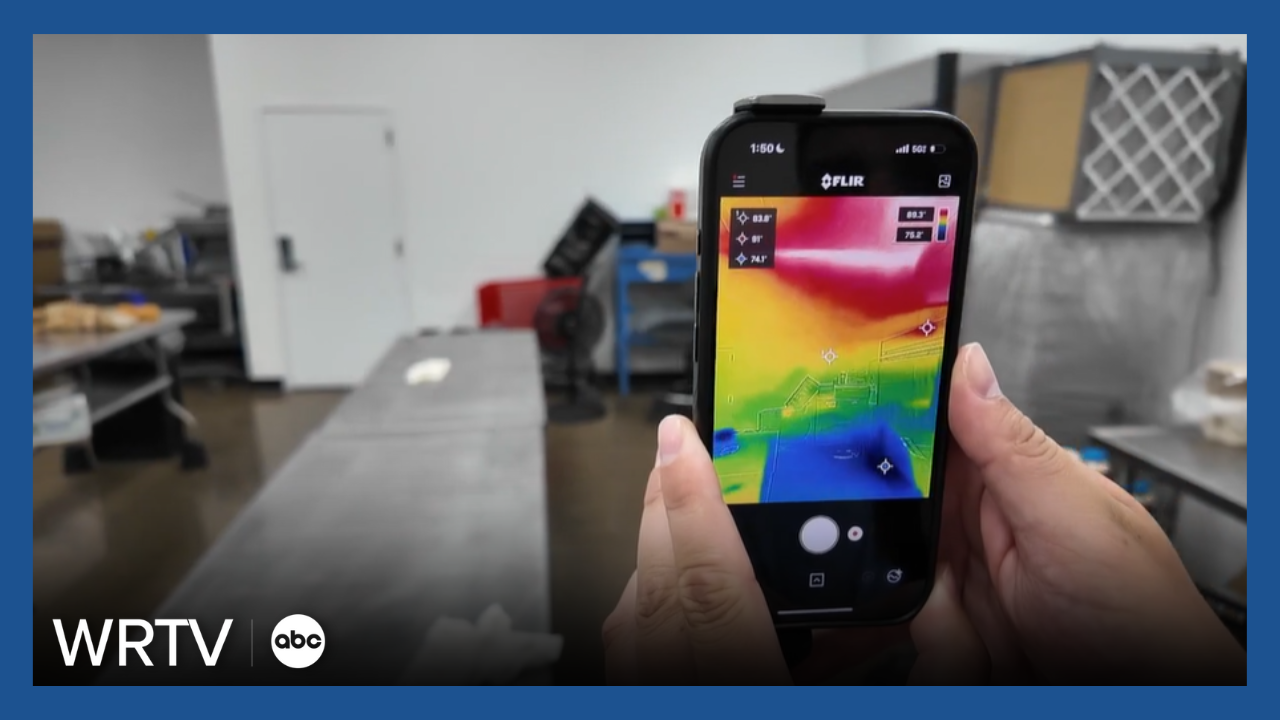INDIANAPOLIS — A new program is aiming to help Marion County nonprofits become more energy efficient and save money.
Thriving Nonprofits is a program made possible by a partnership between the IFF and the Indianapolis Office of Sustainability.
This is the first year for the program. In its inaugural year, there were 44 nonprofits that applied. In the end, ten nonprofits were selected to participate.
The chosen nonprofits receive an energy assessment from IFF. After the energy assessment, nonprofits receive a grant for up to $10,000 each to make the suggested upgrades.
"The goal is to allow us to provide funding to Indianapolis nonprofits to reduce their overall energy bill, so they can have more money to fulfill their missions," explained Stephanie Goodrid Lawson.

Goodrid Lawson is the Executive Director of the McKinney Family Foundation, which is funding the program.
South Bend and Bloomington have similar energy assessment programs. Goodrid Lawson said the new Indianapolis program was inspired by these programs, but there are some differences.
"South Bend and Bloomington have actually created a program that's funded by their city through additional taxes, so they didn't need philanthropic support," Goodrid Lawson explained. "In Indianapolis, we wanted to be a philanthropic partner instead of just going and using Indianapolis taxpayers' money."
One nonprofit that was selected for the program is Second Helpings in Indianapolis.
"We are involved in food rescue, hunger relief, and culinary job training," said Linda Broadfoot, the CEO of Second Helpings.
"Last year, we rescued 4.3 million pounds of food that we kept from the landfill and put to good use," Broadfoot continued.
Broadfoot explained how Second Helpings was selected for the program.
"We've gotten more vocal in how we talk about environmental sustainability in our work, and luckily I think some folks were paying attention," Broadfoot said. "Someone reached out to us from the office and encouraged us to apply."

Second Helpings tracks their environmental impact closely. You can read more about their current energy efficiency and environmental impact here.
WRTV visited Second Helpings on the day of their energy assessment. Broadfoot and her team were very excited to learn the findings.
"We're gonna really dig in from top to bottom and see where we can be more efficient," Broadfoot said with a smile.
Ian Loera and Donna Sink from IFF were on site to do the energy assessment.
Loera uses a forward-facing infrared camera to determine where heat was flowing from.
"If we look here, we can actually see the heat coming off the reach-in coolers," Loera demonstrated.
Parts of the building were hotter than others. Loera looked at the appliances and lights that he considered could be part of the problem.

"It's a little bit of detective work," Loera shared. "I might use this to check, peer into the wall to see what the insulation's like, to see how much heat is coming in."
"Keeping the building cool has been really hard for us," shared Broadfoot.
Volunteers in the hot kitchen, with lots of running ovens and other large appliances like fridges and freezers, were surrounded by fans to help keep them cool.
Broadfoot mentioned it is crucial to keep volunteers "safe and happy" during their shifts by keeping them cool.
Loera also looked closely at the ducts inside the building for ways to save energy.
On the roof of the building, he also inspected the heating and air conditioning units.
After an assessment, Loera puts together his findings. He will offer recommendations in his report of how energy can be saved. This will eventually be shared with each of the ten nonprofits in 2025's program.

From there, the nonprofits can get to work on the recommended changes, and receive the grant money to make the repairs, which should be completed by the end of 2025.
While the upfront work and costs of repairs might seem like a lot, ultimately, the energy saving swaps are designed to save nonprofits money.
"We are very serious about using our donor dollars as responsibly as possible," Broadfoot shared of Second Helpings. "Aside from the obvious ecological benefits of doing these things, it helps us stretch our dollar, so we can deliver even more meals to the community."
"The whole point of this is to save on energy bills. When you have large coolers, large kitchens, lots of different people that you need to feed on a daily basis, that's a large energy burden for these nonprofits," Goodrid Lawson shared. "We want to reduce that energy burden by making sure they have the most energy efficient appliances and energy efficient technologies at their disposal."
What does the future of the program look like? While Loera and Goodrid Lawson are optimistic about continuing the program in 2026, they may make some changes based on how this first year goes.
"This is our first attempt. It's our first cohort. We're very excited to go through it, and we're hoping that more individuals and foundations will join McKinney Family Foundation so we can expand this and do a lot more for Indianapolis," Goodrid Lawson shared.
The ten nonprofits selected to participate in 2025 include:
- Aspire Higher Foundation
- B-SIDE Creative Campus
- Coburn Place Safe Haven
- Community Action of Greater Indianapolis
- Community Alliance of Far Eastside
- Fairview Presbyterian Church
- HealthNet
- Mary Rigg Neighborhood Center Outreach
- Second Helpings
- Outreach Inc.
The Indianapolis Office of Sustainability does not know when applications for the 2026 selection process will be available yet, but that information can be found on their website and social media channels.





